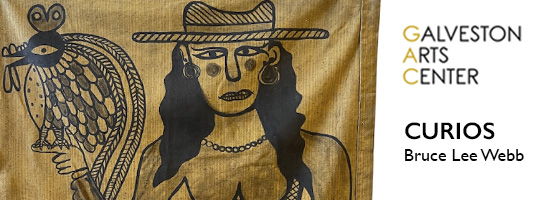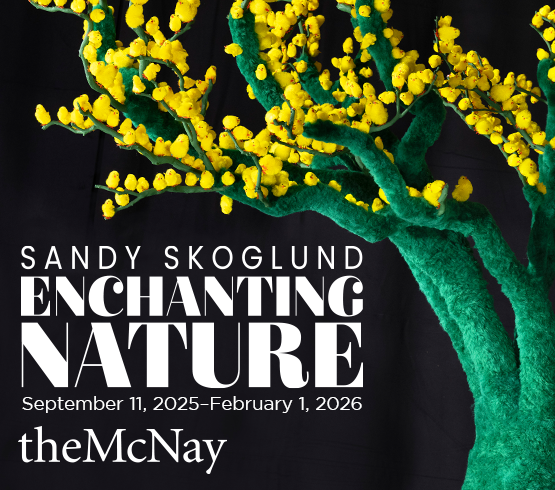Anyone who has ever passed through the lobby of the Moody Performance Hall in Dallas’ Arts District, wheeled their luggage through Dallas Love Field’s ticketing hall, or attended services at the city’s Temple Emanu-El synagogue has (perhaps unknowingly) been in the presence of one of the region’s most respected artists.
More than twenty years after his death, his legacy will be honored in the retrospective, Octavio Medellín: Spirit and Form, on view at the Dallas Museum of Art, Feb. 2, 2022- Jan. 15, 2023.
Many say the homage to Medellín is long overdue. “I think that over time, his national presence has shrunk a little bit and I definitely hope that the show will help to reactivate interest in him,” says exhibition curator Dr. Mark A. Castro. “He is well-known among the Texas art scene, but we just didn’t know the amount of work…we had no idea of the breadth of his career.”
A generation of artists in the Dallas area studied with him, built their own careers, then went on to become teachers to shape a younger generation. At the Creative Arts Center of Dallas (originally opened by Medellín in 1966 as the Octavio Medellin School of Sculpture), many of his formulas and approaches are still being taught. “Our communities are full of artists who are teachers, and we tend to just focus on the art and not necessarily look at the teaching,” Castro says. “So, one of the challenges for me was that Medellín was a teacher throughout his life and, in many ways, people know him more as a teacher than they know his work.”
Castro has taken a roughly chronological approach in the exhibition, composed of approximately 80 total items, starting with a collection in the first gallery spanning from the 1920s to the early 1950s. Included are two wooden busts from 1926 and 1927, which, though still rough in form, show Medellín’s emerging understanding of how to depict the human figure. Nearby, a 7-foot sculpture carved from Honduran mahogany (with a surface Castro describes as liquid and silky smooth) depicts a woman holding a deer against her chest.

1 ⁄6
Octavio Medellín. Courtesy of Bywaters Special Collections, Hamon Arts Library, Southern Methodist University. Photographer: Jay Simmons.

2 ⁄6
Octavio Medellín, The Spirit of Revolution, 1932, direct carving in Texas limestone, Lent by the Estate of the Artist

3⁄ 6
Octavio Medellín, The Hanged, 1939, direct carving in black walnut, Dallas Museum of Art, Kiest Memorial Purchase Prize, Fourteenth Annual Dallas Allied Arts Exhibition, 1943, 1943.9

4 ⁄6
Octavio Medellín, Untitled (Masked profiled figure holding staff and fish), c. 1947, linoleum block print, Dallas Museum of Art, gift of Otis and Velma Dozier, 1984.135

5 ⁄6
Octavio Medellín, Azurmalachite Plate, c. 1949, glazed stoneware, Dallas Museum of Art, Dallas Art Association Purchase, 1949.37

6 ⁄6
Octavio Medellín, Moses, 1955, direct carving in black walnut with lead fills, Lent by the Estate of the Artist.
Another portion of the exhibition focuses specifically on Medellín’s trip to the Yucatan to study Mayan sculpture and carvings at the ruins of Chichen Itza in the late 1930s, which would prove to be a pivotal trip for him and spawned many future works. “He was really interested in Mayan art and he really looked at how they would depict narrative across these flat surfaces, how they would interlock different human figures and elements to tell a story,” Castro explains. “And that kind of interlocking positional structure appears in a lot of his larger public commissions. He learned a lot about how to do public art on a grand scale from looking at ruins.”
Today, the biggest concentration of Medellín’s public art commissions is in the Dallas area, including a mosaic and sculpture at Temple Emanu-El. Moody Performance Hall and Dallas Love Field airport are home to stained glass windows Medellin designed for an East Dallas church in 1960, which were rescued before demolition in 2013. A sub-focus within the show is devoted to Medellin’s public art commissions, including a digital interactive map of the locations.
But beyond the power of Medellín’s individual work, Castro’s hope is to reinforce to the public that North Texas has a rich artistic history; its art scene continues to help shape our national cultural landscape. “I hope it will broaden their minds of what a Texas artist might look like, or what the Texas art scene was,” he explains. “Because I think what we’re going to see over the next few years is that there are lots of people like this who come from different backgrounds or have different perspectives. We’re just beginning to tell their stories, and they’re long overdue.”
—AMY BISHOP




